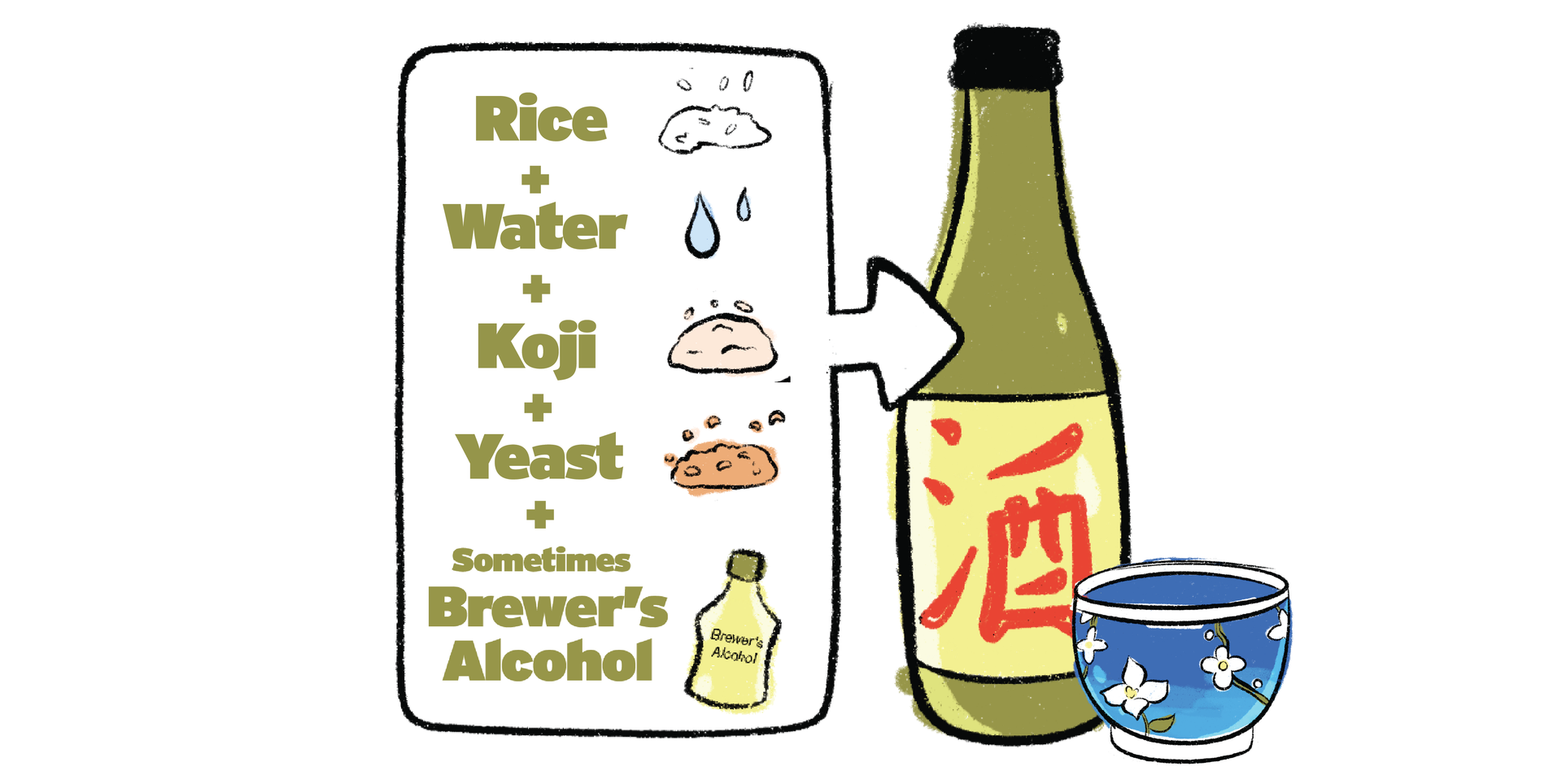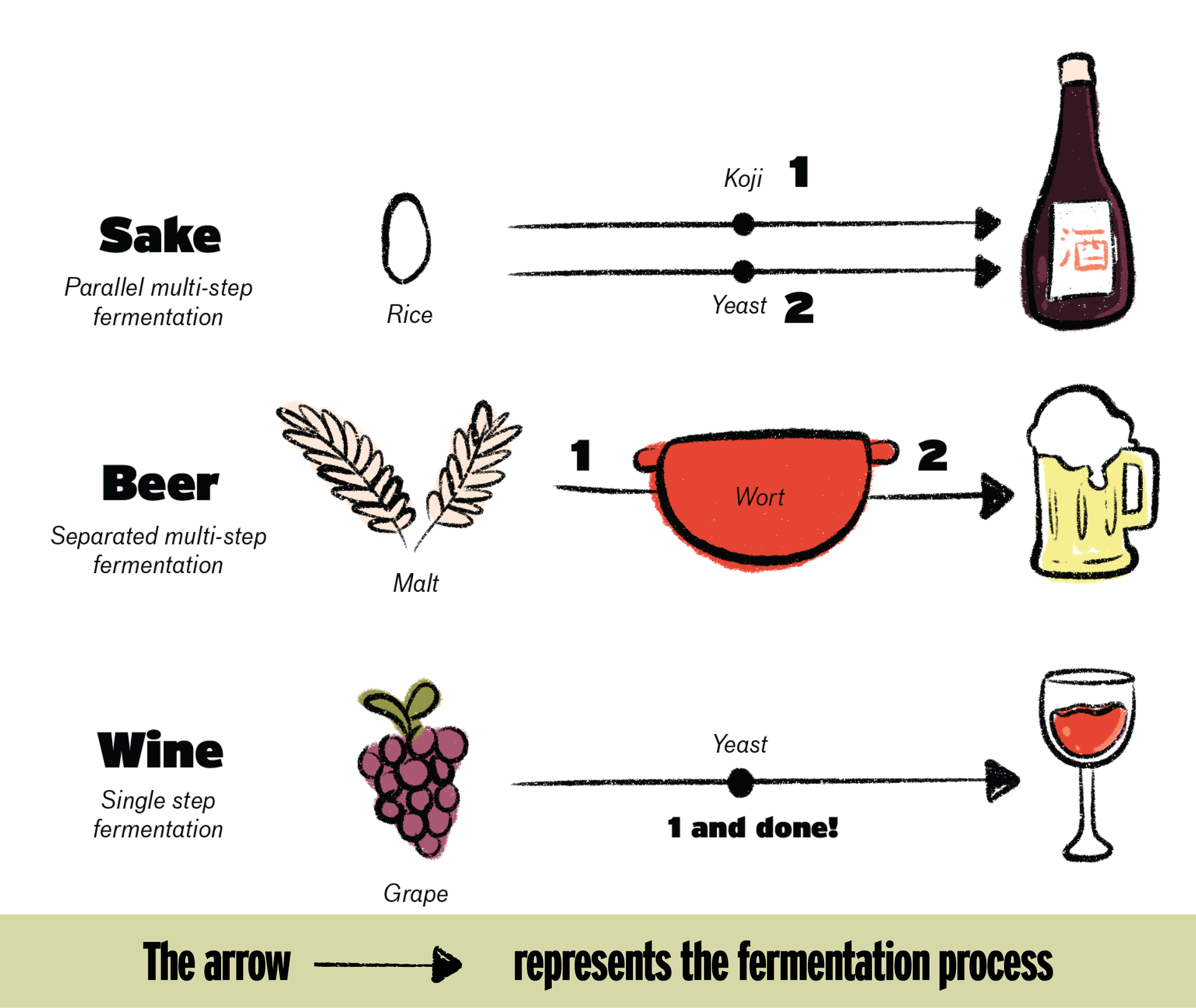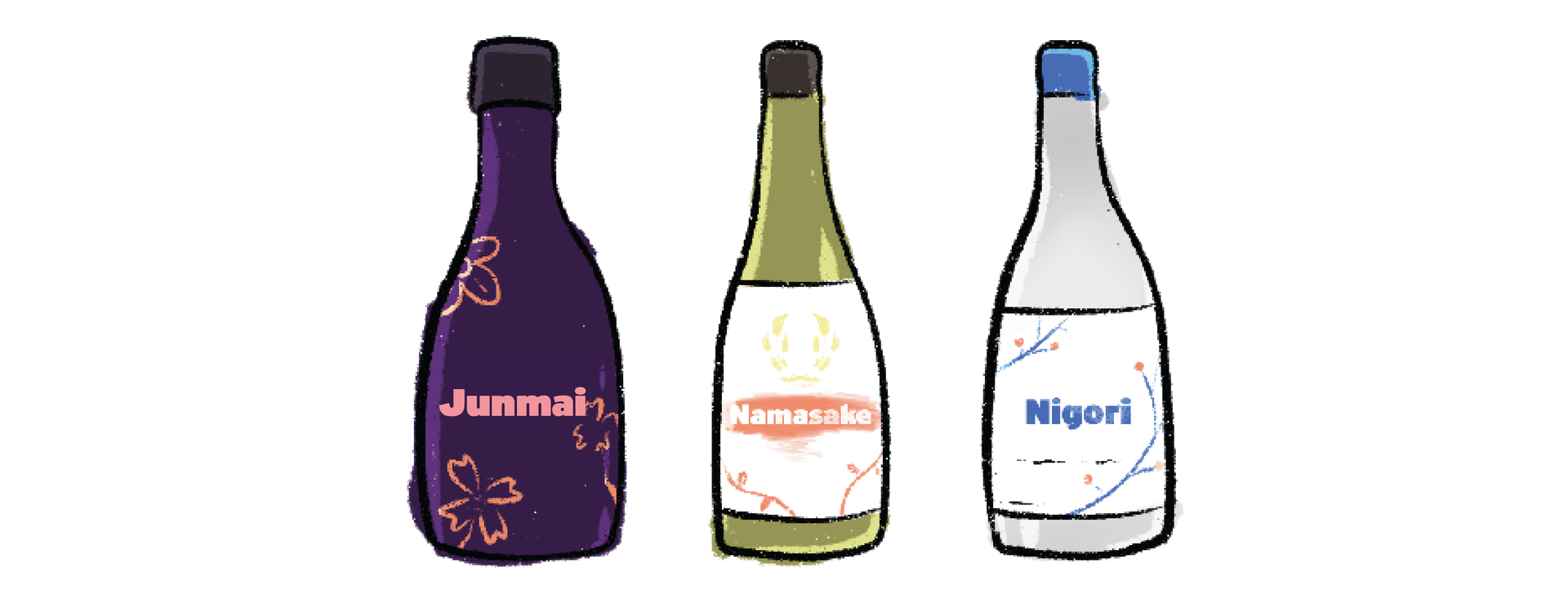

Ready to meet wine's spirited sibling? Here's what you need to know about Japan's iconic elixir: Sake!


Ready to meet wine's spirited sibling? Introducing Japan's iconic elixir: Sake!
First things first: Don't let sake's daunting reputation deceive you – especially given your ever-evolving wine expertise, this will be a walk in the park!
Once you grasp a few core principles, you'll be savouring delicious sake with confidence. This chapter will guide you through the essentials of sake: its various styles, production techniques, debunking myths, and offering savvy food-pairing tips. You'll be all set to wow your mates with your newfound sake wisdom and treat your palate to an unforgettable adventure!
Plus... a special new opportunity for adventurous tasters at the end that you won't want to miss!
Your wine and sake coaches,


Sake is a famous fermented rice beverage from Japan.
Sake is a traditional Japanese alcoholic drink made from fermented rice that has been enjoyed for centuries in Japan and all around the world. In fact, while its exact origin is a bit of a mystery, it's believed that the process of turning rice into alcohol made its way to Japan from China around 500 BCE!


Sake offers a vast range of flavour profiles, from refreshing and light to rich and fruity, with some even boasting a rustic and distinct "ricey" taste. We know that "ricey" may sound like a bit of a cop-out descriptor... but trust us, it's a real thing!

While it may seem vague to use such broad terms, fear not! There are plenty of descriptors that can help you navigate the wonderful world of sake. These often overlap with those used for wine and typically include the sake's intensity (such as delicate or robust) followed by its main flavour category (such as fruity, floral, or savoury).
So does sake taste like wine?

Sake has similarities to wine but can taste quite different. It typically has a softer, broader, and more milky texture (since it doesn’t contain tannins and has lower acidity than wine), and has higher alcohol content.
When it comes to tasting sake, you’ll already be a natural. It’s very similar to how to taste wine: it all comes down to assessing its appearance, smell, taste and texture on the palate. If you want to really refine your sake tasting-skills, here's a great guide to learning how to taste sake like the pros.

Sake is made from rice, water, koji mould, yeast and sometimes brewer's alcohol is also added.

Even though sake is often referred to as "rice wine", it's actually made through a two-step brewing process that’s more similar to beer. Instead of fermenting sugar from fruit into alcohol like wine (one step), sake is made by converting starch into sugar and then converting that sugar into alcohol (two steps), which is similar to how beer is made. But sake doesn't have that much more than that in common with beer making, especially considering its main ingredients. So the art of Sake making is truly one of its own!


Since sake hails from Japan, the lack of English on labels might seem a bit daunting. But fear not! With just a handful of terms and concepts under your belt, you'll be able to glean heaps about a particular sake from a mere glance at its label—no Duolingo required.

The polishing grade refers to the amount of the rice grain that has been polished away, leaving only the starchy centre. It is also referred to as seimai-buai or milling rate. A higher polishing grade results in a smoother and more refined flavour, while a lower polishing grade results in a more robust and full-bodied flavour.

The polishing grade is typically expressed as a percentage, with a lower percentage indicating a higher degree of polishing. For example, a polishing grade of 60% means that 40% of the rice grain has been milled away, while a polishing grade of 80% means that only 20% of the rice grain has been milled away.


Daiginjo
Daiginjo is considered very highly polished, with 50% or less of the original rice kernel remaining
Ginjo
Gingo is considered highly polished, with 60% or less of the original rice kernel remaining
Honjozo
Honjozo is considered moderately polished, with 70% or less of the original rice kernel remaining
Futsushu
Futsushu is considered the lowest polishing classification and has no minimum polishing rate required.
You'll often see either the polishing grade term or the milling rate as a percentage on the front or back of the label. Sometimes you'll see both! But one thing's for sure, any sake we sell at Good Pair Days will clearly identify the polishing rate on the tasting card so you'll know what style to expect.

Aside from polishing rates and the decision to use brewer’s alcohol, there are a few other useful style-related sake classifications to know.
Junmai
In sake, Junmai is a term that means "pure rice" and indicates that the sake is made only from rice, water, and koji. This means no brewer's alcohol was added during the brewing process. As a result, Junmai can be used as a prefix for any Ginjo and Daiginjo sake that was made without any added alcohol (eg. Junami Ginjo, Junmai Daiginjo).
If you just see only Junmai on the label, you can assume a polishing degree of 70% or less.

Nama sake
Nama sake, sometimes referred to as "fresh sake", is a style of sake that is unpasteurised and bottled immediately after production, giving it a lively and fresh taste. Unlike most sakes that do undergo pasteurisation to extend their shelf life, Nama sake remains a raw and living product. This means it requires refrigeration, even before opening, and has a shorter shelf life. To fully enjoy the unique taste of Nama sake, it's best to consume it soon after purchase and keep it refrigerated at all times.
Nigori
Nigori is unfiltered sake that has a cloudy appearance due to the presence of rice particles and sediment suspended in the liquid. It is known for its rich, creamy texture and often sweeter flavours than clear sake.

The best pairing technique with sake is to match it with a dish of the same intensity of flavour and weight. That way the sake won't overpower the dish, and the dish won't overpower the sake!

Light and delicate sake with light and delicate dishes
example: Daigingo with sushi and sashimi.
Medium-bodied sake with moderate intensity with medium-weighted dishes
example: Gingo with tempura or grilled tofu or chicken.
Rich and robust sake with hearty dishes
example: Honjozo, or sake with high alcohol content, with roasted meat, hearty rice bowls or ramen.
Sweet sake with sweet, salty or spicy dishes
example: Sweet Nigori (or any sweeter style of sake) with fresh fruit, light desserts, or dishes that generously feature a sweet and sour sauce or sweet chilli sauce.

Sake naturally pairs beautifully with Asian cuisine, but don’t be afraid to be adventurous and try it with non-Asian dishes too!

Ready for a real myth buster?
Though you may recall seeing sake served warm at a local Japanese joint, this is more of a tradition than a modern approach to enjoyment. In fact, it's best to serve your sake chilled!

Historically, sake was served warm to intentionally mask some of the characteristics considered unappealing, and less refined. But today’s sake is much higher quality; it’s more delicate in style and refined in flavour. Serving it warm would mask this beautiful character. Serving it with a chill preserves its elegance and allows it to express itself with more finesse!
What should you drink sake out of? Traditionally sake is enjoyed from an ochoko cup, but we recommend serving it in a wine glass for the best appreciation of its colour, and swirling ability to release more aromas.




You've nailed the basics, so why not take the plunge and opt-in to our Sake of the Month Program!? Experience the exciting world of sake for yourself with a new special-release sake bottle added to your wine box every month. Each bottle of sake comes with tasting notes, pairings and a matching recipe to try at home, too!
Simply update your Box and Spend settings by clicking ADD Sake of the Month when you log in.


If you like what you're learning, take a deeper dive with our Sake 101 Guides!
Here are three great guides to start with:
- Storing Sake — Spoiler alert: it's very different than wine.
- 10 Must Know Sake Terms You already learned a few, here are the rest.
- How Sake is made: The Basics A brief overview of each step in this unique process.

Ready to prove your new sake knowledge? Take the Chapter 9 Sake Quiz! You'll earn your Chapter 9 Badge as well as 50 points by scoring 7/9 correct!


So what's next? Grab a bottle of sake and some sushi or a hearty bowl of ramen, and enjoy your newfound knowledge through experience! The academics are one thing — now you're ready to bring your new learnings into the real world!
Happy Wine and Sake Adventures!
Alex & Banjo
Do you know your wine personality? If your answer is no, take our quiz to find out which wines to pick up next and build your box!
Build my box



